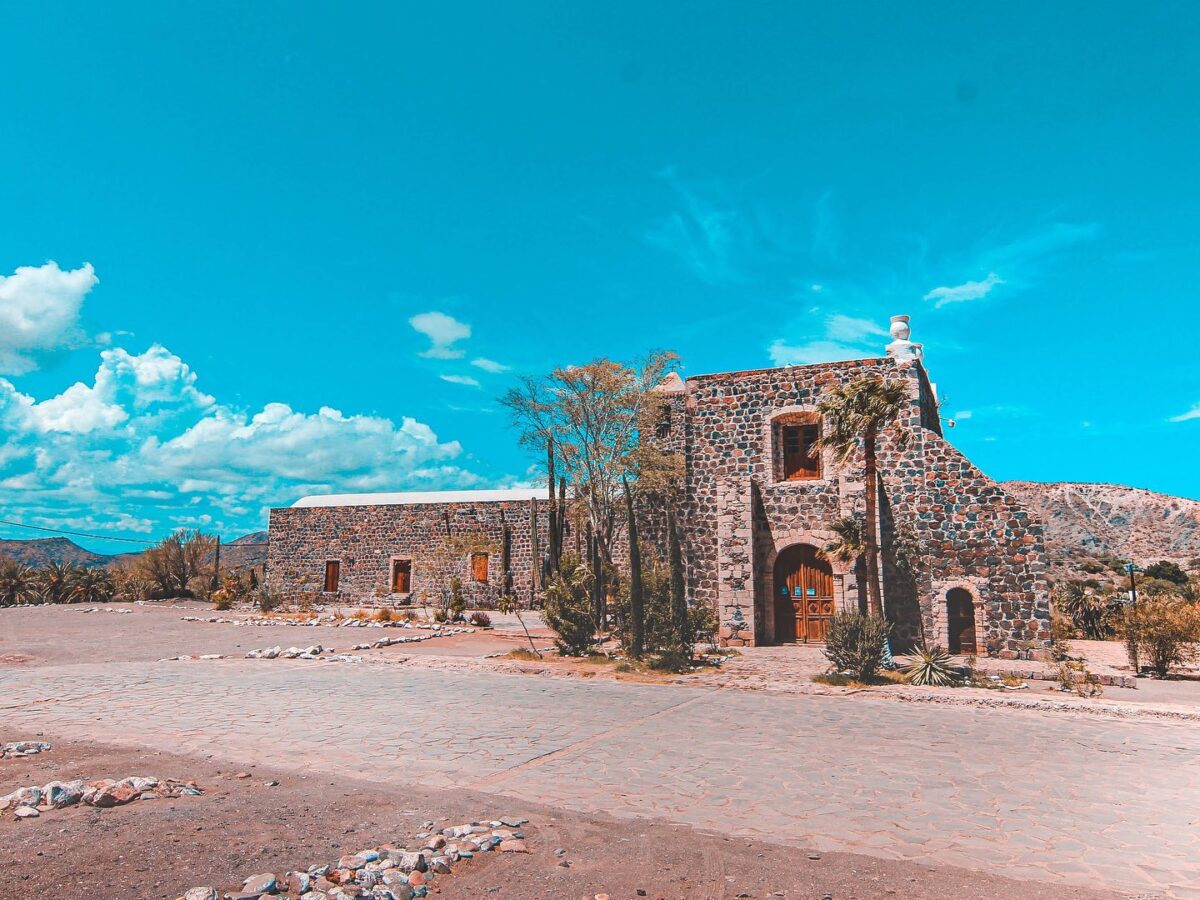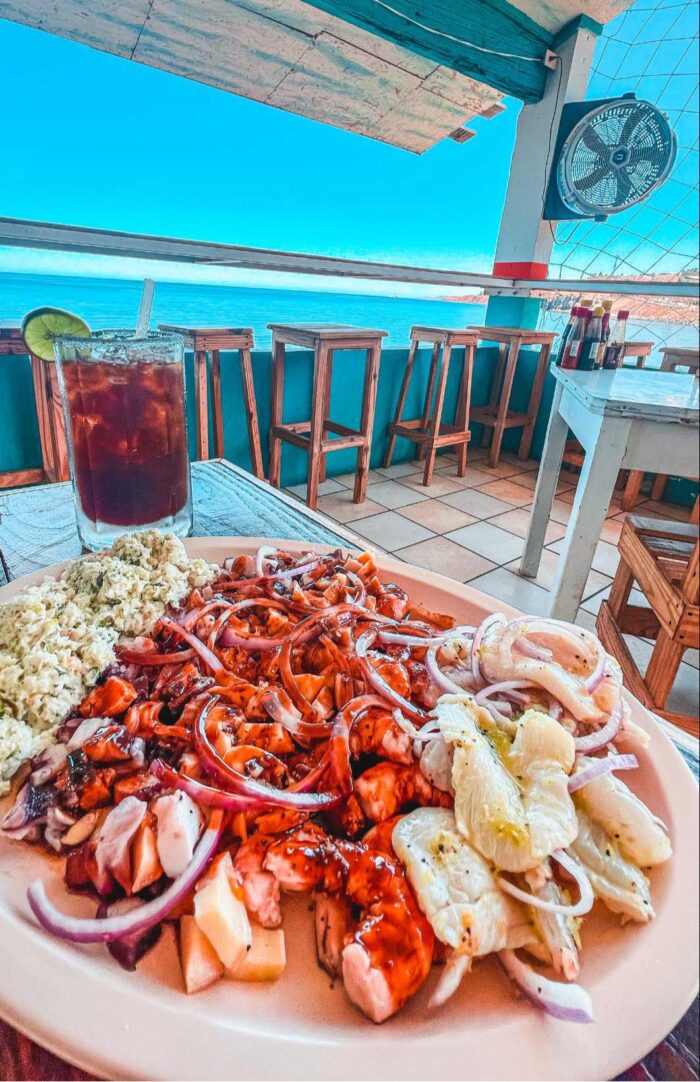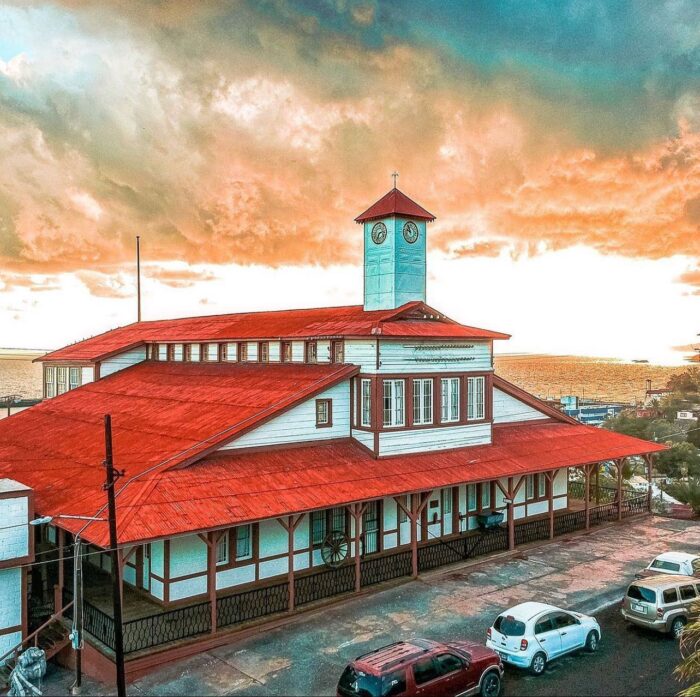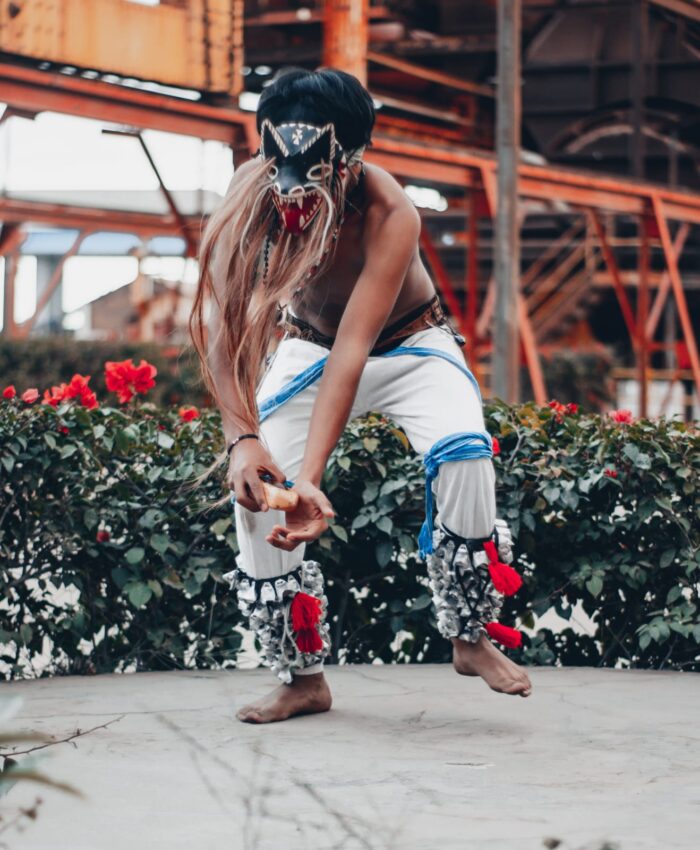
Three Centuries of History between Stone Walls

Continua en la historia
 Desliza a la izquierda para continuar
Desliza a la izquierda para continuar

Though architecturally austere, the Santa Rosalía Mission, located in the Mulegé municipality, reflects the endurance of the local people, especially that of the Cachanías (name given to Santa Rosalía locals), whose motto is The people that refused to die.
 This is an account of the survival of this monument, a silent witness to the history of Baja California Sur.
This is an account of the survival of this monument, a silent witness to the history of Baja California Sur.

Spanish missions were built in Baja California Sur in the late 17th century, under the leadership of Father Juan María Salvatierra, who together with a group of Jesuits, founded the Misión Nuestra Señora de Loreto Conchó in 1697, taking on the tough job of converting the indigenous people in the south of the peninsula.
 Of the 18 religious settlements erected in the state, only ten remain standing, and most of them still have religious services. They are well worth a visit!
Of the 18 religious settlements erected in the state, only ten remain standing, and most of them still have religious services. They are well worth a visit!

 The Mission Built in Caaman Cagaleja
The Mission Built in Caaman Cagaleja
We could say that the success of most of the missions is partially due to the support that the priests got from the indigenous inhabitants of the zone, who shared information about the places with water and other natural resources.
 In the case of the Misión Santa Rosalía de Mulegé, legend has it that when the priests arrived there, they came upon the local Cochimí population, who told them that they called the place Caaman Cagaleja, meaning river among rocks.
In the case of the Misión Santa Rosalía de Mulegé, legend has it that when the priests arrived there, they came upon the local Cochimí population, who told them that they called the place Caaman Cagaleja, meaning river among rocks.
Later on, in 1705, Father Juan Manuel Basaldúa, sponsored by the marquis of Villapuente, returned to found the mission.

 Placement of the First Stone
Placement of the First Stone
The initial mission structures were made of adobe, which over the years was replaced by stone. That happened with the Misión Santa Rosalía de Mulegé, though the stonework wasn’t completed until 1766.
When visiting, you will find a large rectangular floor plan with a barrel vault, all built in stone. It also has a simple bell tower and exposed stone walls, put in during some of the building restorations.
 Don’t let the austere façade fool you; the mission tells a story of resilience, of those who built it and those who later preserved it.
Don’t let the austere façade fool you; the mission tells a story of resilience, of those who built it and those who later preserved it.

 19th Century: Leaving the Missions Behind
19th Century: Leaving the Missions Behind
Two important reasons led up to abandoning several of the missions in the region: the first being the epidemics that came to the peninsula with the missionaries, dramatically decimating the native population.
After that, the religious constructions, mostly adobe, suffered numerous floods, a very common occurrence in the region, which led to their ruin.
 In the case of the Misión Santa Rosalía de Mulegé, it was abandoned in 1828, mainly due to two events: a flood in 1771 followed by the plague epidemic that left fewer than 100 inhabitants in the zone in 1800.
In the case of the Misión Santa Rosalía de Mulegé, it was abandoned in 1828, mainly due to two events: a flood in 1771 followed by the plague epidemic that left fewer than 100 inhabitants in the zone in 1800.

 Restoring the Church (and Faith)
Restoring the Church (and Faith)
With the establishment of the mining company El Boleo in Santa Rosalía in the late 19th century, and its consolidation during the century that followed, the population in the Mulegé municipality grew significantly, which may have saved the old mission from oblivion.
 The stone building has undergone several renovations. In fact, in 1973, the National Anthropology and History Institute (Instituto Nacional de Antropología e Historia, INAH) restored the façade, maintaining the austerity of the original design.
The stone building has undergone several renovations. In fact, in 1973, the National Anthropology and History Institute (Instituto Nacional de Antropología e Historia, INAH) restored the façade, maintaining the austerity of the original design.

 An Enduring Historical Legacy
An Enduring Historical Legacy
Since a growing number of Mexican and foreign visitors have become interested in seeing these monuments, the Mission Route Program was created as a guide to the main religious destinations in the region.
When you decide to visit to France in Baja California Sur, don’t forget to explore the Santa Rosalía de Mulegé Mission, about 60 kilometers from the city
 From the scenic overlook, you will see the seemingly endless desert in one direction; and in the other, lush date palms swaying in the breeze from the Sea of Cortez. An unforgettable sight!
From the scenic overlook, you will see the seemingly endless desert in one direction; and in the other, lush date palms swaying in the breeze from the Sea of Cortez. An unforgettable sight!
Location
Transpeninsular Highway, El Rebaje,
Heroica Mulegé, B.C.S.
Hours: Mon to Sun,
8:00 am to 7:00 pm










